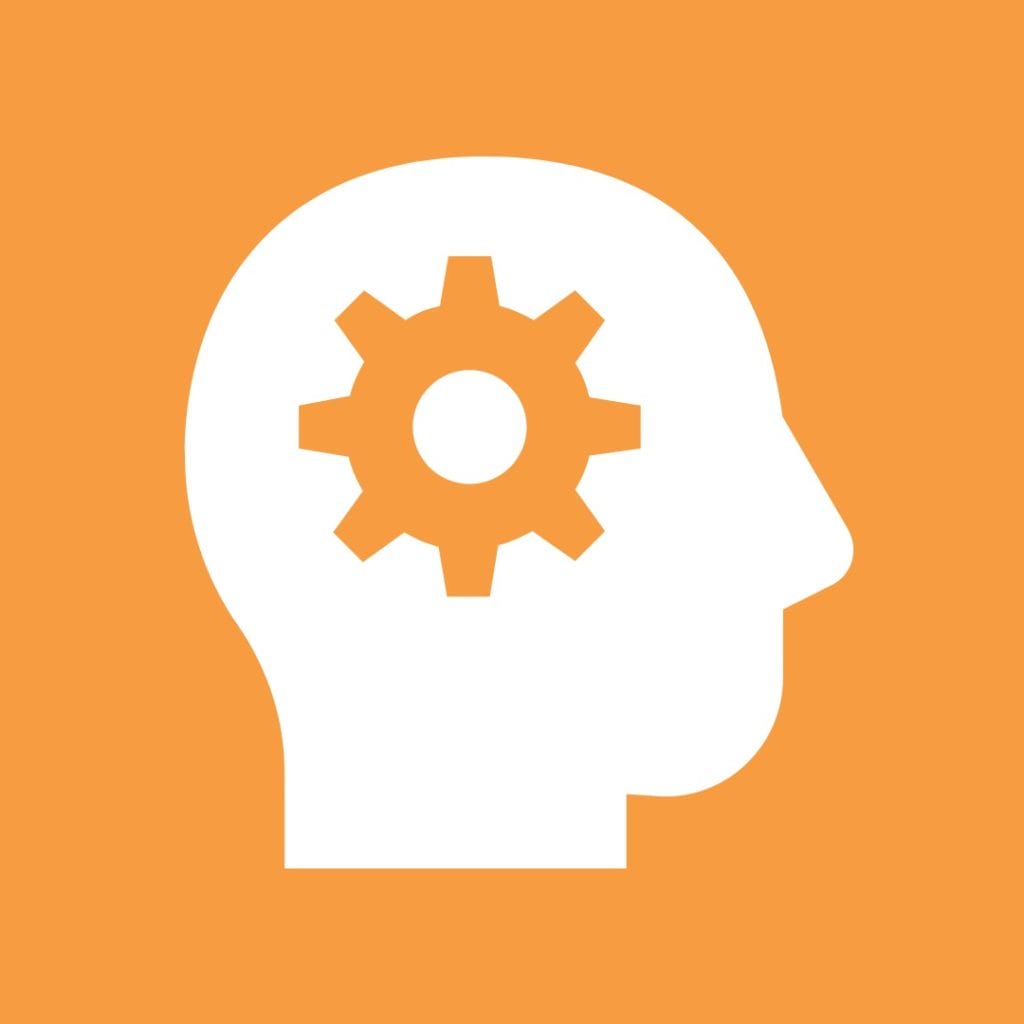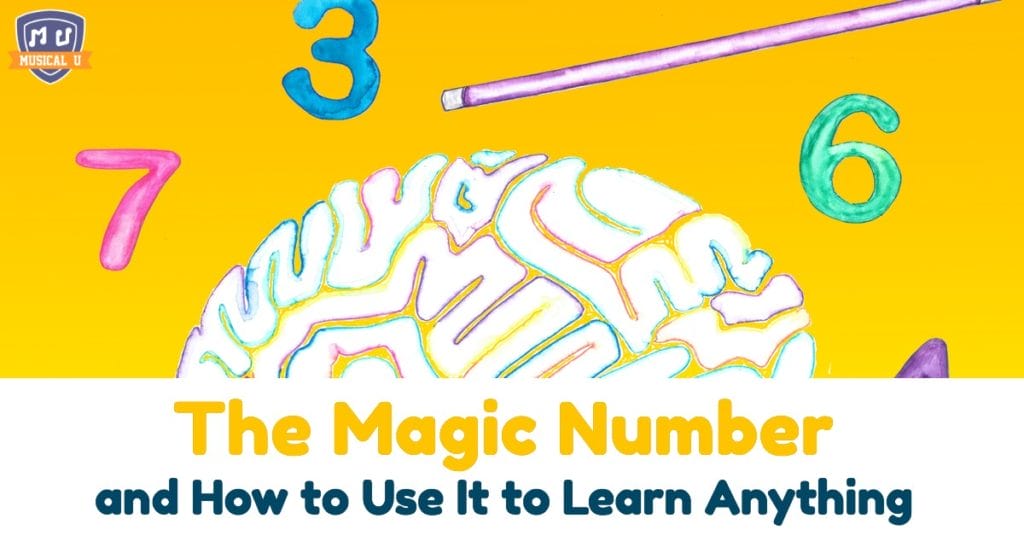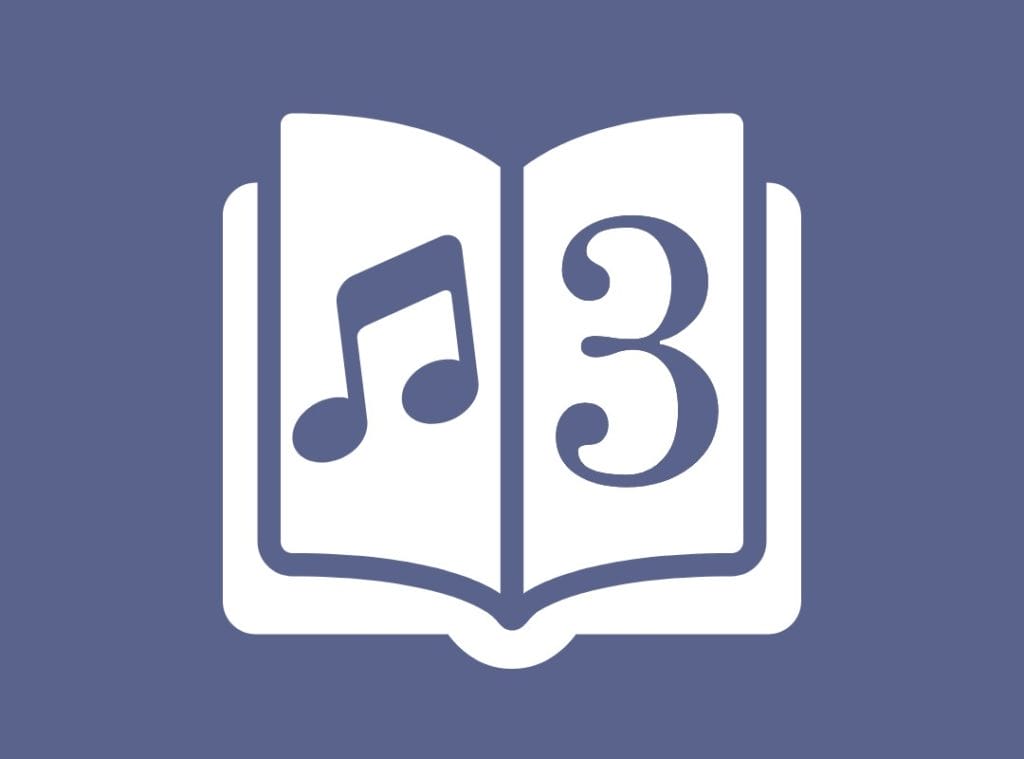The best way to approach learning is to understand the brain processes involved. We musicians can use this knowledge to our advantage in figuring out how to commit concepts, theory, and pieces of music to our long-term memory and be able to effortlessly recall them at will.
Have you ever dived into a new app or gadget and then been frustrated that you couldn’t figure out the simplest things? Me too! This is why I developed the habit of reading the manual.
This led to my interest in neuroscience and the hope for a better understanding of how the brain works. As a musician and a teacher, I felt this understanding might make me a better learner and teacher.
Teaching private music lessons full time for almost 30 years has allowed me to work with hundreds of students and log over twenty thousand hours observing people learning in action.
When I began to connect my knowledge from experience with the reading I was doing about how the brain works, it gave me new insight into learning. Understanding why some things work and others don’t makes it easier to come up with effective strategies and materials for learning. There is a relatively young field that deals with exactly these things called the Science of Learning. Simply put, it’s an applied science that takes an understanding of how the brain works and applies it to learning.
How does this relate to the “magic number”? The magic number is all about the Working Memory and what it can easily hold. To better understand this, first we need to go over the basics of memory.
Understanding How Memory Works
The brain is very efficient and isn’t designed to pay attention to or store all the information it takes in. It stores things for short or long periods of time depending on if the information is revisited at regular intervals or associated with other information. The three main types of memory are Short Term Memory, Long Term Memory, and Working Memory.
What is Long Term Memory?

Long term memory refers to memory storage over a lengthy period of time. Long term memory has an unlimited capacity, and may last from a few minutes to a lifetime. It is formed shortly after short term memory but needs to be revisited at regular intervals in order to last. Rehearsal and Association is required in order to move from short term to long term memory. This process is called consolidation.
Once consolidation happens, accessing the memory is done through a process known as recall. The more times the memory is brought up and the more links there are to it (associations to other information), the stronger the ability to recall.
Having a big picture understanding of information and how it fits into a larger framework is an important part of association, and one that learners often neglect. In other words: don’t just memorize facts; know why they make sense and how they relate to each other!
What is Short Term Memory?
Short term memory refers to the storage of a limited amount of information for a short period of time. It can last for a few seconds, and doesn’t involve manipulating (or working) with the information.
What is Working Memory?
Working memory is a kind of limited memory designed to hold a small amount of information, long enough to use it in the moment. There are writers and scientists who use working memory and short term memory interchangeably, but there is emerging research that there is a difference between the two. The growing distinction is that working memory allows the manipulation of information, whereas short term memory only refers to the short-term storage of information.
 Here’s an example that may help distinguish between the types of memory. Someone tells you that the C chord is made up of C, E, and G. The act of holding the information in your head for a few seconds involves short term memory. However, as soon as you start to do something with it, like play the chord, you are using working memory. In this case, you are holding the information in your head and using the information to play the chord.
Here’s an example that may help distinguish between the types of memory. Someone tells you that the C chord is made up of C, E, and G. The act of holding the information in your head for a few seconds involves short term memory. However, as soon as you start to do something with it, like play the chord, you are using working memory. In this case, you are holding the information in your head and using the information to play the chord.
If you write it down, repeat it out loud, or associate it with something you already know, you are starting to consolidate it to long term memory.
Why is Working Memory Important for Learning?
In learning, working memory is important because it’s the mental clipboard that allows you to hold new information in your head while using it to do something. For example, you figure out a few new chords and use them to play and sing a section of a song. You need to hold the chords in your head as you also concentrate on singing and placing the chords at the right place with the words and melody.
Working Memory Capacity and The Magic Number
Introducing new information in small groupings that working memory can manage is very effective in learning. Too much information introduced at once can easily overwhelm, fatigue the working memory and make it more difficult to grasp or commit to long term memory. John Sweller developed the Cognitive Load theory, which refers to the total amount of mental effort used in working memory. He argues that instructional design can be used to reduce the cognitive load in learners.
Scientists’ opinions on working memory capacity vary. Earlier science suggested that the working memory’s capacity was 5-7 things. More recent studies are suggesting that it’s more likely only 3-4 things.
Here are the reasons why I think that 3 is the magic number in learning:
- Supports Primacy and Recency, with only one thing in the middle. Primacy and recency (parts of the serial-position effect) is the tendency to remember the first and last thing in a list more easily than the middle.
- Supports Chunking. Grouping information in small chunks is easier to string together with other chunks than learning bits one at a time.
- It’s easier to distinguish the individual parts of a group of three at a glance than with larger numbers.
- Works for more learners. There can be variation from person to person in working memory capacity, especially in those with learning issues. In my experience, three is a number that works for everyone.
Although I try to introduce things in threes whenever possible, fours are also effective and sometimes necessary to break up the information evenly.
For instance, key signatures are simpler than recognizing a note on a staff, and the total number of keys breaks up better in sets of fours (this keeps all sharp keys together and all flat keys together). It also avoids leaving a set of two things, which is too small for drilling.
Knowing When Something Is Mastered
 Students often think they’ve mastered something when they can perform it smoothly by the end of one sitting. When they come back at a different time and can’t immediately perform at the same level as before, they feel frustrated. They didn’t realize how much they were relying on their working memory.
Students often think they’ve mastered something when they can perform it smoothly by the end of one sitting. When they come back at a different time and can’t immediately perform at the same level as before, they feel frustrated. They didn’t realize how much they were relying on their working memory.
Committing information to long term memory takes revisiting the knowledge regularly over a longer period of time. Understanding the difference between being able to do something and mastering something is an important part of making a realistic plan. Let’s define these three concepts within the context of learning music:
- Memorized: Information may not be understood or related to other things, but it can be recalled.
- Learned: Information is understood, connected to a bigger framework, and can be recalled with a small effort.
- Mastered: Information can be understood, recalled, and used automatically without needing to involve the working memory. Learner must be able to replicate skill or information at the beginning of a new practice session on multiple days. If it’s a piece of music, this means the first time you play it. Once it’s played through or you review anything, the working memory gets involved if it’s not already automatic.
How Long Does it take to Master Something?
Malcolm Gladwell is famously quoted as saying that it takes 10,000 hours of deliberate practice to become world-class in any given field. What most people misunderstand about this rule is that the number of hours is meaningless without the “deliberate practice” part of the time spent. In my experience as a teacher, students have spent much less than 10,000 hours total in deliberate practice, and have still become incredible musicians.
Although there isn’t an exact or universal answer to the question of just how much time mastery takes, I think it is always useful to have a ballpark idea of what kind of time commitment is needed.
Focus on mastering small skills or pieces of music at a time, rather than thinking of mastering an entire instrument. Small regular amounts of practice are more effective than big chunks. This means a little every day, even if it’s fifteen minutes, is better than an hour once or twice a week. Shoot for everyday as a soft goal, with the hard goal being four or five times a week.
- One week is not long enough to have committed information permanently. You can get good at working with a set of information and be able to recite it back reliably, but if you don’t continue to use it or revisit it, it won’t last. This doesn’t mean you can’t introduce the next set of information – just make sure you’re still working with the old set.
- One month is a more reasonable expectation of mastering a small set of information, a skill, or a piece of music that is moderately challenging.
- Use it or lose it; information or a skill won’t be kept or easily recalled forever if you don’t continue to use it.
How to Use The Magic Number To Learn Anything
So how can the “threes” concept help with consolidating knowledge into long-term memory?
 Introduce Three Things. Try to choose three things that are related to each other, and begin with the most obvious starting spot. This is the foundation on which everything else will be built. Try to develop an overall picture of what you are trying to learn so you can drop these details in the framework of a bigger understanding.
Introduce Three Things. Try to choose three things that are related to each other, and begin with the most obvious starting spot. This is the foundation on which everything else will be built. Try to develop an overall picture of what you are trying to learn so you can drop these details in the framework of a bigger understanding.- Drill and Use Three Things Until Mastered. Drilling can be done through flashcards and learning apps, and of course, through putting the three things into practice. In music, this will, of course, most likely be through playing.
- Introduce Three *New* Things. The next three things you introduce should relate or build on the foundation started with the previous three things. Keep the drilling of these things separate from the previous set in this stage, so that it doesn’t get less repetition. It needs isolated attention until it is mastered before being mixed in with other information where it may not show up as often.
- Combine, Drill and Use Until Mastered. If you combine sets and you feel overwhelmed, you may have combined them too soon. It can be easy to mistake a strong working memory for mastery when you are on the first few sets. As you add more things, interconnecting the information may feel challenging and a little uncomfortable, but it shouldn’t feel overwhelming. If it does, small sets have not been mastered. Figure out what sets are slowing things down, and give them more individual attention.
- Repeat Steps 3 and 4.
Things to Keep in Mind When Making a Learning Plan
Now that you have the basic principles of using threes to learn, you need to make a plan and put it in action with the above principles. Here are some tips to guide you:
- The same amount of information takes longer to master when too much is introduced at once.
- Learning is more complete when information is not only drilled on, but used in a real world setting until it’s mastered.
- Information needs to be revisited at regular intervals over a long period of time in order to be recalled from long term memory. This means that even as new information is added, you need to continue to use the old information.
- Make sure to build the framework for how the details you learn fit into the big picture.
- Make as many links or connections to the information for better retrieval by coming at the information from different angles. Using our chord example from earlier, the ways you could do this are: spell the chords, name what numbers of the scale the chord comes from, use the chords to play a song, try to find the chords you learned in a piece of music, or see how the chords fit in the key you are in currently.
- Find a way to engage your interest. The brain releases chemicals that help with focusing and encoding memory when you are interested! It’s a natural way to aid learning and stay motivated. One effective way is to think of a project that you want to do using the new skill or information you are trying to learn.
Working with a small number of things at a time when learning music-related information is especially helpful because so many different skills need to come together in order to play music. It’s difficult to teach a concept completely separate from the other concepts needed, but it’s really helpful to isolate it, drill on it and then combine it back in. I use this strategy to build strong foundation skills for my students on rhythm, note reading, solfege, key signatures, chords, and more.
Below, I give given two examples of this strategy in action. The first example shows how to use the strategy to learn a simple set of information – key signatures. Keys are introduced in sets of four, connected to a big-picture understanding, and then drilled and connected to each other.
The second set shows how to use the strategy to learn something more complicated (build piano reading skills from scratch). Notes are introduced in sets of three, connected to a big picture understanding drilled in all possible combinations, and used to read as much music as possible – ideally with fresh music, with each practice only containing the current note range.
Sample Learning Plan #1: Key signatures
What You’ll need: Quizlet (free platform for drilling on Quizlet.com or through Quizlet App.)
Practices Per Week: 3-7
How Long On Each Step: One week
Time Per Practice: 5-15 minutes
Time To Completing Goal: 14 weeks (3-4 months)
Click to download Sample Learning Plan #1 – Key Signatures PDF
Sample Learning Plan #2: Reading Music
Below is an example of how I teach note reading, and a plan that you can follow to do it on your own!
Reading Piano Music for Beginners (10 through adult)
I like to introduce reading notes in a slightly different order for older students, since they are usually ready to play with both hands simultaneously right away. Again, it’s important to introduce information in an order where it can immediately be used to do something in the real world. The plan below focuses on building reading skills from the beginning through to level 1.
What You’ll need:
- Quizlet (Free platform for drilling on Quizlet.com or Quizlet App)
- Treblemakers Piano Method Book 1 – Free on kindle unlimited, or you can buy a hard copy. Contains groups of songs to play for each note range
- Free Downloads – Links below for additional music to make sure each micro level has enough songs to master note range
How Long On Each Step: Few days to one week, depending on how many days of practice
Practices Per Week: 3-7
Time Per Practice: 5-15 minutes
Time To Completing Goal: 9 weeks (2-3 months)
Click to download Sample Learning Plan #2 – Reading Music PDF
What’s Next?
After you have completed these steps, you should have built the note recognition needed to read the most commonly used range of piano music. Below are the next two important steps of reading piano music after basic note recognition (covered in Treblemakers Piano Method Book 2):
- Learn scales to be able to play in other keys.
- Learn to see patterns and shapes in music such as scales, intervals, and chords.
Thousands of hours of research have been done by those looking to really understand the best way to approach learning. Making learning plans based on how memory works makes learning more effective and lasting. It may be counterintuitive, but the truth is that working with less things can actually help you learn faster because it feels easier. There’s that old saying “No pain, no gain”, but in this case, it really is the opposite – if you’re feeling mentally fatigued while learning, you’re not using the way your brain works to its best advantage.
Use the sample learning plans above as a guide to create your own, grouping the information and skills you want to learn into easily-digestible groups of threes. The ease and efficiency of the magic number method prove that learning can be easy without compromising quality – you just have to learn smart.
Whether you’re trying to nail a difficult solo or wrap your head around some unfamiliar music theory, mastering the art of learning efficiently is the key to making strides in your musical progress.


 Introduce Three Things. Try to choose three things that are related to each other, and begin with the most obvious starting spot. This is the foundation on which everything else will be built. Try to develop an overall picture of what you are trying to learn so you can drop these details in the framework of a bigger understanding.
Introduce Three Things. Try to choose three things that are related to each other, and begin with the most obvious starting spot. This is the foundation on which everything else will be built. Try to develop an overall picture of what you are trying to learn so you can drop these details in the framework of a bigger understanding.





